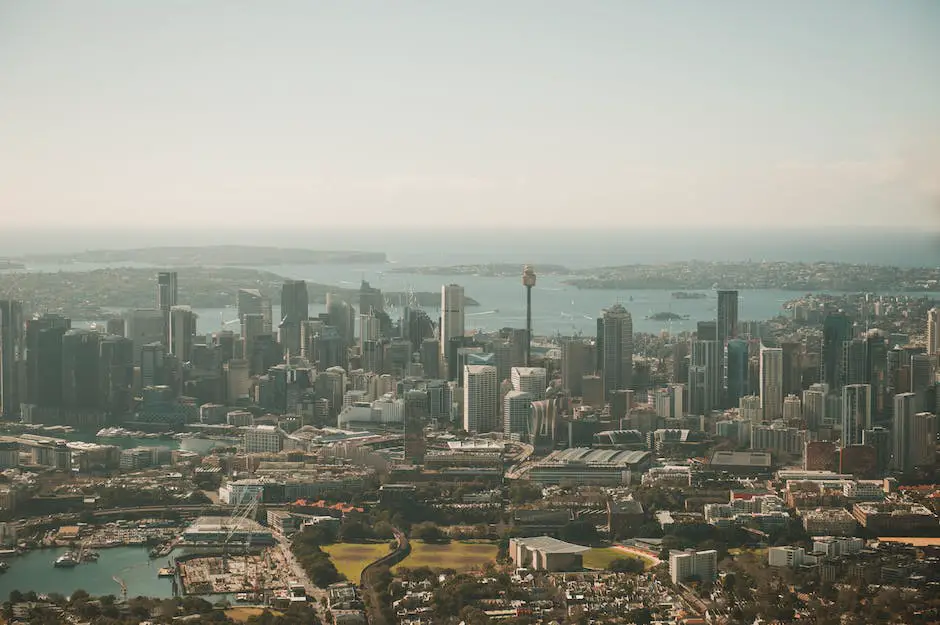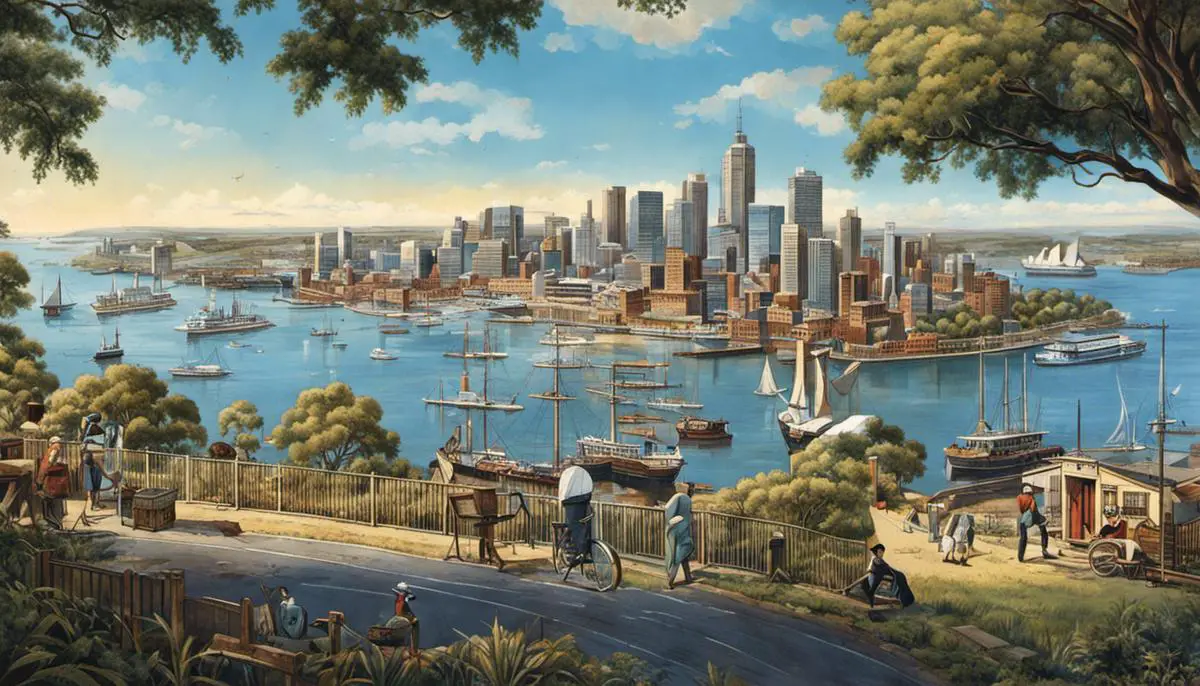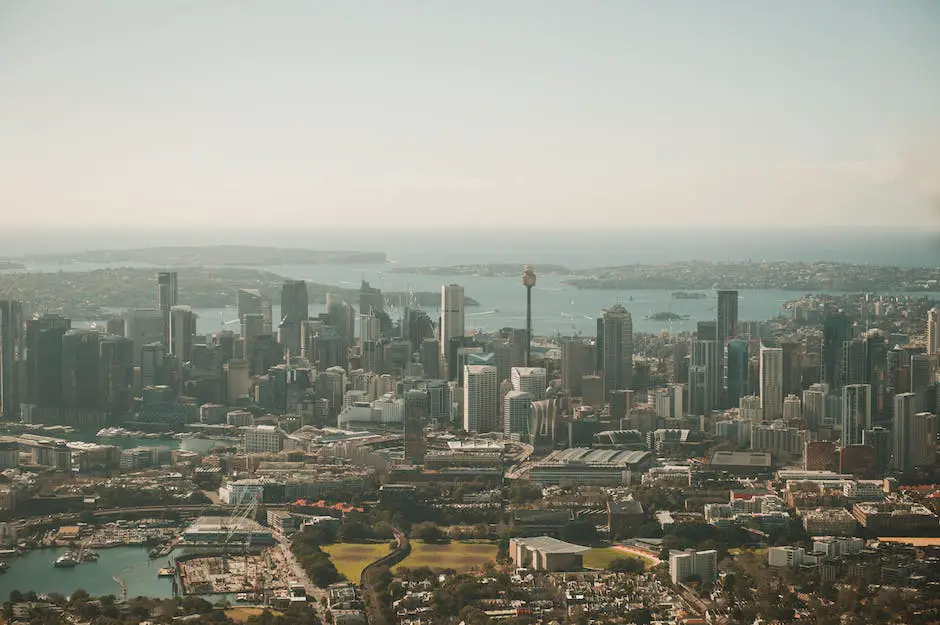Picture a vibrant and bustling city, an iconic urban landscape dotted with architectural masterpieces and brimming with cultural diversity that is recognized worldwide. This image is inarguably synonymous with Sydney, the oldest and most populous city in Australia. But to truly appreciate the richness and vibrancy of this global metropolis, we must journey back to its roots, where its sprout from a modest British colony in 1788, to a at the dawn of the 20th century, and trace its phenomenal evolution into the world city it is today. As we sail through Sydney’s intriguing history, we will explore its humble origins, its transformative years through the 19th and early 20th centuries, and its significant rise from a burgeoning metropolis to a globally revered city in the latter part of the 20th century to the present.
Establishment of Sydney as the first Australian city
Arrival of the First Fleet
The inception of Sydney as the first official settled city in Australia traces back to January 26, 1788, when the First Fleet, a collection of eleven British ships, arrived at Sydney Cove. The fleet, led by Captain Arthur Phillip, bore approximately 1400 passengers primarily composed of convicts, marines, and their families. Their goal was to set up a penal colony, as Britain’s prisons were overflowing. This crucial day marked the start of Australia’s modern history, now commemorated annually as Australia Day.
Initial Challenges and Sydney’s Development
The early settlers, mostly unfamiliar with the Australian terrain and climate, faced immense challenges. They struggled with limited food and water resources, poor soil quality which was not conducive to agriculture, and diseases which quickly spread in the living conditions. Additionally, there were conflicts with the indigenous Aboriginal population, who were dispossessed of land they had inhabited for over 60,000 years. Despite these hurdles, Sydney gradually expanded. Governor Lachlan Macquarie, appointed in 1809, played a crucial role in Sydney’s development. Under his governance, the city saw substantial progress in infrastructure and organization. He ordered the design of roads and public buildings, which paved the way for Sydney’s transformation into a thriving colonial town.
Sydney: Australia’s Foundational City
The cornerstone of the burgeoning nation of Australia was laid with the establishment of Sydney, one of its earliest settled cities. Tactically located as a chief seaport, Sydney experienced rapid economic expansion. The foundation of the nation’s first bank, school, and newspaper took place right here, reinforcing Sydney’s importance. The gold found near Bathurst in 1851 sparked immense population growth and an influx of wealth, further propelling the city’s expansion. As Australia progressed towards federation in the late 19th century, Sydney sustained its growth, asserting itself not only as Australia’s inaugural city, but also as a key cultural and economic hub.

Sydney in the 19th and early 20th Centuries
Sydney’s Evolution: The Influence of the Industrial Revolution
With the dawn of Australia’s industrial revolution in the 1840s, Sydney morphed from a mere penal colony into a vibrant commercial epicenter. This period witnessed marked urbanization and population growth, effectively transforming the cityscape. The mid-18th century gold rush was a defining event for Sydney, luring hordes of immigrants and triggering an unprecedented surge in prosperity and expansion. In the closing years of the 19th century, Sydney began to set up its manufacturing sector, with industries such as metalwork, food manufacturing, and textile production thriving in the bustling city. Factories sprung up along the harbor and railways seamlessly connected Sydney’s inner suburbs to its outer ones, fundamentally shaping the city’s economic and social character.
The Evolution of Sydney: Government Reform and Population Growth
Entering the 20th century, Sydney experienced significant changes with the advent of the Federation of Australia in 1901. This event marked the consolidation of British colonial territories into a unified political structure, greatly influencing Sydney’s administrative landscape and prompting a range of infrastructural updates including the development of sewage systems and city streets. The time period also brought a demographic transformation as significant immigration, notably during and post-World War II, turned Sydney into a cosmopolitan city. A vital figure during this transition was Lachlan Macquarie, who served as the fifth Governor of New South Wales from 1810 to 1821. Often hailed as a leading architect of Sydney’s early infrastructure, Macquarie’s vision helped the city evolve from a penal settlement into an emerging metropolis. His projects, including the construction of public buildings, churches, and roads, along with encouraging business, brought prosperity to Sydney by the early 19th century.

Modern Sydney: From mid 20th Century to present
The Emergence of Sydney as a Global Landmark
Gradually, from the end of 19th century, particularly during the profitable gold rush years of the 1850s and 1860s, Sydney shifted from a thriving city to a world-famous destination. The city’s infrastructural development rapidly paced up due to the revenue garnered from the lucrative mining activity. Landmarks such as the Sydney Harbour Bridge and Sydney Opera House took shape, earning Sydney international repute. Other infrastructure enhancements such as railways, airports, and seaports helped establish Sydney’s interconnectedness within Australia and the world, which in turn propelled its growth and standing on a global level.
Multicultural Influences and Economic Growth
Over time, Sydney has been shaped by multicultural influence, largely owing to immigration from the UK, Europe, Asia, and the Pacific islands. The city became a melting pot of cultures, contributing to its vibrant arts scene, diverse cuisine, and multilingual population. This multicultural character has lately influenced business, making Sydney a hub for international companies. Moreover, the economy of Sydney has experienced consistent growth, and it is now noted for its robust financial sector, tourism industry, and growing information technology sector.
Present Day Sydney
In the present day, Sydney is renowned as one of the most livable cities globally, regularly featuring in rankings for its quality of life. It’s also become famous for its cultural events such as the Sydney Festival and Sydney Gay and Lesbian Mardi Gras. This thriving metropolis is now home to over five million residents, maintains Australia’s largest economy, and continues to be a significant gateway for international visitors. Its blend of historic and modern architecture, flourishing arts scene, and diverse population, help to explain why Sydney is often the first Australian city people think of.

The story of Sydney is one that encapsulates the essence of endurance, grit, and unyielding spirit to transform and evolve. From its early days as a struggling British settlement to its later metamorphosis as a booming industrial hub in the 19th and early 20th centuries, Sydney has always reflected an unwavering resilience. The city’s trajectory towards becoming one of the most iconic global cities in the latter half of the 20th century and to the present day is Testament to this tenacity. Today, Sydney, a symbol of multicultural coexistence, economic robustness, and infrastructural brilliance, continues to hold a spotlight on the international stage. Yet, it not merely stands proud of its achievements but continues to envision a future that upholds its legacy while relentlessly striving for greater heights.






